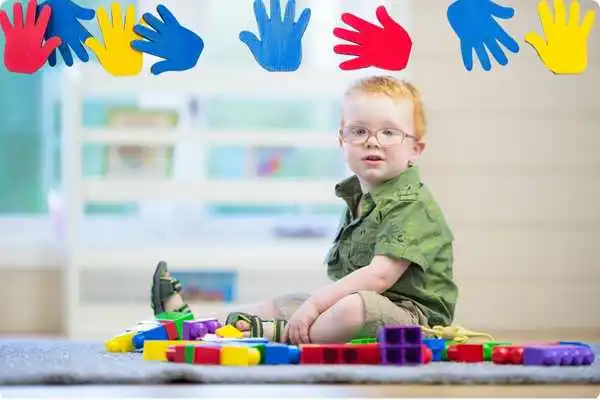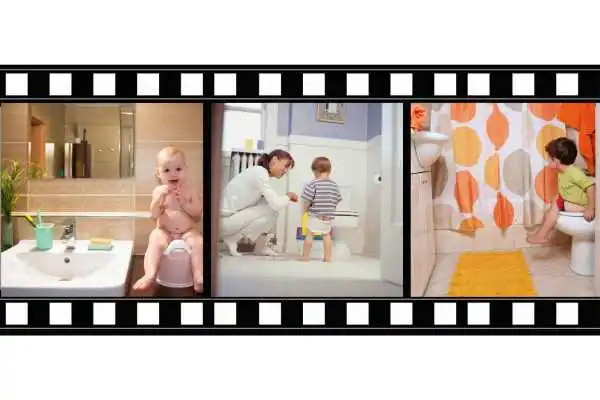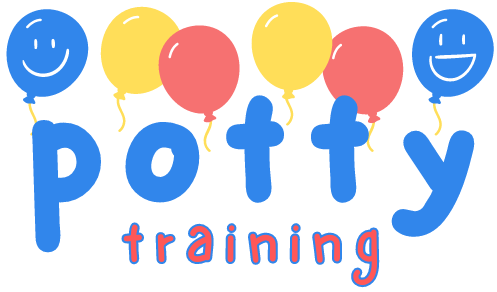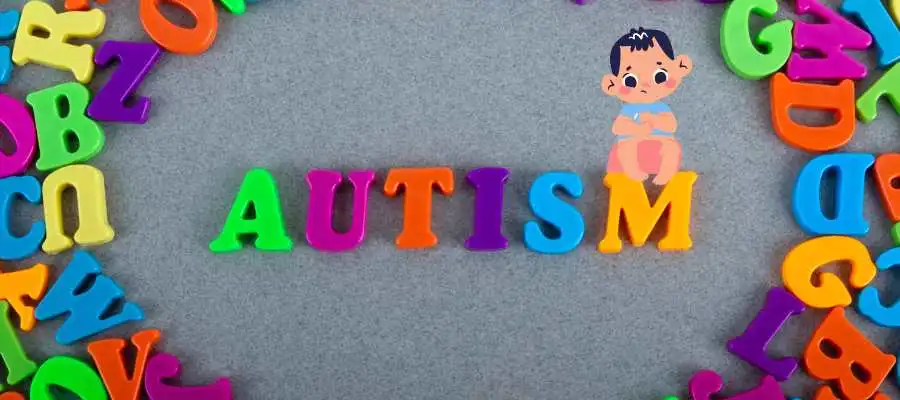In this article, I’ll provide an overview of autism, discuss the common challenges faced when potty training a child with autism, and offer guidance on how to approach potty training. We’ll also explore the practical strategies and tips for successfully potty training a child with autism, as well as how Applied Behavior Analysis (ABA) therapy can support this process.
But before we dive into potty training, let’s start with a brief explanation of what autism or, more broadly, Autism Spectrum Disorder (ASD), means.
Table of Contents
Autism or ASD
Autism Spectrum Disorder (ASD) is a condition that affects how the brain develops, leading to differences in how children communicate, interact with others, and behave. The term ‘spectrum’ means there’s a wide range of symptoms and levels of severity, so each child with ASD can have unique challenges and abilities.
★Early Signs of Autism
A lack of eye contact, limited pretend play, preference for solitude, repetitive behaviors, and heightened sensory sensitivities.
★Diagnosis of ASD
Parents usually start to suspect something when they notice their child isn’t developing at the same pace as other kids or shows unusual behaviors. This leads them to seek a formal evaluation from a specialist.

Understanding Potty Training Challenges with Autism
Children with autism often face unique challenges when it comes to potty training. These can include:
Sensory Sensitivities
Autistic children often experience heightened sensory sensitivities, which can complicate the potty training process. Some children may have a strong aversion to certain textures, like toilet paper or wet wipes, while others may struggle with the sounds and bright lights in bathrooms.
This can make the bathroom environment uncomfortable or even frightening and lead to resistance or anxiety around potty training.
Challenges in Communication
Children with autism may have difficulty understanding instructions or expressing their needs, complicating the potty training process. making it hard for parents to understand when their child is ready for potty training.
Nonverbal children, in particular, may not be able to express their needs verbally, requiring parents to look for cues and establish consistent routines.
Key Tips for Communication Challenges:
- Observe the child’s behavior for signs that they are uncomfortable with nappies.
- Establish a consistent daily routine for bathroom visits, creating predictability and reducing anxiety.
- Use visual aids, such as charts or pictures, to help the child understand the steps involved in potty training.
Routine and Consistency
Children with autism often thrive on routine and predictability, which makes them feel secure and comfortable. When routines are disrupted, it can be unsettling and cause stress or anxiety.
Potty training introduces substantial changes to their daily schedule and usual activities, which might lead to distress or resistance as they adjust to these new expectations.
Potty Training Readiness Check
Before diving into potty training, it’s essential to assess your child’s readiness. Here is a quick checklist that your child may need to start potty training:
✔️ Interest in the Bathroom: Does your child show curiosity about the toilet or potty?
✔️ Dry Diapers for Longer Periods: If your child stays dry for two hours or more, it may indicate bladder control.
✔️ Regular Bowel Movements: A consistent bowel movement schedule can be a sign of readiness.
✔️ Follows Simple Instructions: If your child can understand and follow basic commands, they may be ready to start potty training.
Check out this article if you need more details “6 Signs Your Child is Not Ready For Potty Training“
Choosing the Right Time to Start Potty Training
Timing is everything when it comes to potty training for children with autism Avoid starting during major life changes, like moving to a new home or the arrival of a new sibling.
Consider starting during the summer, when children wear lighter clothing and bathrooms are warmer.
Make sure your family has a relatively low-stress environment to focus on potty training.
Effective Strategies for Potty Training with Autism
Once you’ve determined your child’s readiness and are all set to go, here are some strategies to help you achieve success:
🌟Create a Consistent Routine
Children with autism thrive on routine. Establish a consistent potty training schedule that includes regular bathroom visits throughout the day. Start with shorter intervals and gradually extend the time between bathroom breaks as your child gains confidence.
I recommend having your child sit on the potty every morning for 10 to 15 minutes. Continue this practice for at least 30 days to help establish a consistent routine.
🌟Use Positive Reinforcement
Positive reinforcement is a highly effective technique for potty training, whether the child has autism or not. Offer rewards like small treats, toys, or praise when your child sits on the potty or successfully uses it. Create a reward chart to track progress and celebrate milestones.
🌟Keep Communication Simple
Use clear and simple language when explaining potty training to your child. Avoid complex phrases and use visual aids, such as pictures or social stories, to help them understand the process. It’s important that everyone uses the same words when talking to the child.
🌟Address Sensory Sensitivities
If your child has sensory sensitivities, create a comfortable bathroom environment. Consider using a small potty rather than a full-sized toilet and make the bathroom a calming space. Play soft music or use calming lights to reduce sensory overload.
🌟Involve the Entire Family
Potty training is a team effort. Involve other family members, caregivers, and teachers in the process. Consistency in different settings is vital for success, so make sure everyone uses the same words and sticks to the same routine.
🌟Address Constipation and Medical Issues
Constipation is a common issue among children with autism and can impede potty training progress. If your child experiences constipation, consult a pediatrician or pediatric urologist to address the underlying issue. A high-fiber diet and increased fluid intake may help reduce constipation.
🌟Appropriate Tools and Resources
Using the right tools and resources can significantly impact the success of potty training for children with autism. Consider using training seats with steps for easier access to the toilet, which can eliminate the need for traditional potties and avoid the need for relearning later. Additionally, some parents find potty training apps helpful for reinforcing the steps involved in potty training.
Recommended Tools for Potty Training:
★Training seats with built-in steps to help children reach the toilet safely.
★Potty training apps, like “Potty Time” that use interactive avatars to guide children through the process.
★Alternative cleaning methods, such as warm water and cotton wool, to address sensory sensitivities.
Realated Article: 7 Tips for Potty Traning A Stubborn Child.
Related Article: Potty Traning 101: Tips, Challenges and Realistic Expectations

How can ABA therapy help?
ABA therapy is a popular treatment for Autism Spectrum Disorder (ASD). It’s based on the principles of behavioral psychology and focuses on using positive reinforcement to promote good behaviors and decrease bad ones. Some key parts of ABA therapy are:
★Principles of Learning: ABA uses reinforcement to strengthen desirable behaviors and extinction to reduce undesirable ones.
★Specific Techniques: ABA therapists use various strategies to help children with ASD achieve small, incremental goals, eventually leading to broader changes in behavior.
★Tailored Approaches: ABA is highly individualized, allowing therapists to focus on each child’s unique needs and work towards their developmental milestones.
Overall, the key takeaway is that while autism presents unique challenges, early diagnosis and interventions like ABA therapy can significantly enhance the quality of life for individuals with ASD and their families.
ABA therapy often requires a significant amount of time, effort, and financial resources, making it challenging for some families to access and sustain.
Some critics argue that ABA therapy’s focus on modifying behavior could lead to excessive emphasis on compliance, potentially overshadowing the individual’s autonomy and emotional well-being.
Sensory Issues in Potty Training
⭐Modifying the Bathroom Environment
The bathroom environment can be a significant source of sensory challenges for children with autism. Harsh lighting, strong cleaning smells, and other factors can create discomfort or anxiety. To address these issues, consider making adjustments to create a more sensory-friendly environment.

Suggestions for a Sensory-Friendly Bathroom:
★Use softer lighting to reduce harsh brightness.
★Incorporate calming colors into the bathroom decor to create a soothing atmosphere.
★Add familiar scents, like vanilla candles or fabric softener, to create a comforting environment.
★Provide a training seat with a secure ring to help children feel safe on the toilet.
⭐Sensory-Based Techniques for Potty Training
Children with autism may experience a range of sensory responses to different aspects of potty training. Some may prefer the feeling of a full nappy, while others might be sensitive to certain textures or temperatures. Understanding your child’s sensory needs is crucial for successful potty training.
Techniques to Address Sensory Issues:
★Use warm water and cotton wool for cleaning to reduce discomfort from cold or rough materials.
★Provide a stool for children to rest their feet on to reduce the fear of falling into the toilet.
★Keep bubbles in the bathroom to help relax children who may feel tense or anxious.
Conclusion
Potty training a child with autism takes time, consistency, and a tailored approach. To help your child succeed, focus on setting a regular routine, using positive reinforcement, and understanding the specific challenges they face. Remember, each child is unique, so there’s no single way to do it. Be adaptable, adjust to what works for your child, and don’t hesitate to ask for help from professionals if you need it.

